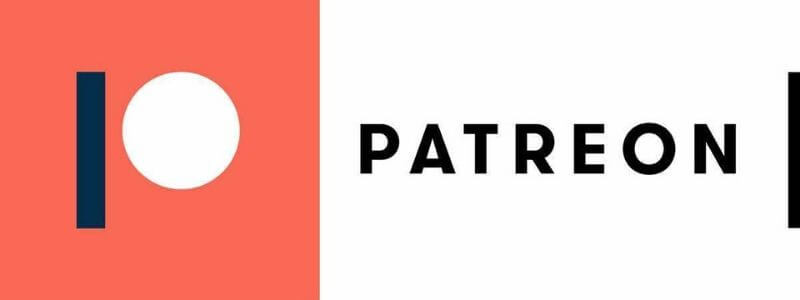This will be my last free tech industry post. From here on, you’ll get one post a week, which is the Product Hunt Roundup. On June 1st, I will go public with my subscription of $15/mo, and I am considering this my Seed Round. I will write a few pitches about why I think I’m worth your $15/mo investment. If I have already sold you with my writing so far, please consider subscribing and being a part of Forward Thinking’s Pre-Seed round. I set up a 33% discount for anyone subscribing before June 1st, which is $10/mo. I will write a blog post about my pre-seed round, and will include you in it if you become a paid subscriber. There will never be another chance to be a pre-seed investor in Forward Thinking. A pre-seed investor in me. I never forget my early backers.
People have been trying to make money on the internet since its inception. From the early days of Paypal, to the rush of building games on top of Facebook and iOS, to being an early musician on Youtube, and riding the wave up to today. People have always been in the pursuit of making money on the internet, but the ways to do that have changed (based on market trends). And in the next wave, the answer is subscription business models for creators. Subscription creators (Subcreators) will be making money from subscription products, like newsletters, podcasts, communities, and SaaS tools. This is the evolution of the creator. And there is going to be a gold rush of of subcreators who want to cash in and even more founders who want to sell them picks and shovels. This is a post to help the builders create in the right direction.
But before I talk about the future, it’s important to reflect on the past. Particularly, going back to a company founded in 2012, who had the vision to get creators paid as well, but took a different direction.
A Medium Term Solution to a Long Term Problem
 |
Medium is a place where writers can write anything and make money off it, and Medium’s approach is quite unique and innovative, and I expect nothing less from the cofounder of Blogger and Twitter, Evan Williams. His thought was what if they charge every reader a subscription, they could distribute that money to the blog posts and writers where the readers spend the most time. So I spend $5/mo, and a portion of that is split among the writers I spend time reading. It sounded genius and it still is. This model of monetization is brilliant. It’s just…complicated. Not clear. A lottery some would say. See, the editors rule the land at Medium. If an editor liked an article, they would promote it, and it would get more views, hence getting the author paid more. But this was up to Medium. The writers don’t have direct email access to their followers, and Medium has a choke hold over the experience. The model still works. I still get paid monthly from Medium, with random amounts every pay day. But Medium’s model has frustrated subcreators, motivated builders, and have created a gap in the market that is letting other players enter the space.
Speaking of other companies, there was another company founded around the same time as Medium that took a different path to monetization; Patreon.
Power to the (sub)creators
 |
The first time I heard about Patreon was in 2014, when Tyler Ward told us he was trying something new on one of his Youtube videos. He wanted a way for his fans to interact directly with him and him to capture that value more directly. I never became a Patron, but Patreon just never went away. It just got bigger. See, unlike Medium, Patreon believes that subcreators should have a direct relationship with the people who consume their content. They should have distribution access to their fans. So Patreon ultimately pioneered the subscription business model for subcreators.
While Medium and Patreon were both founded around the same time, only one of the two is going to be on the right side of history and it’s becoming clear that this is going to be Patreon, and the subscription business model it kickstarted. Now in 2020, we see tons of companies building for the subcreators, that are surfing on the waves that Patreon started for all of us.
Now, that we understand how we got here, let’s build a map for the founders wanting to explore this uncharted territory and leave their mark on the subcreator.
The Subcreator Stack in 2020
In 2020, founders got a lot smarter. They see the direction the tides are blowing in. They see the rise of the subcreator. And they are building for it. Here are a few of the companies who have been built in the last 5 or so years that are trying to establish their dominance in the subcreator world.
Overall subscription/perk management
Subscription Newsletters
Subscription Communities
Subscription Podcasts
I’d argue this this will be 2% of the overall market in a decade. Many more will be built in the future and win and many of these listed will fall short and fail. It’s the wild wild west for subcreators, and you get the chance to build it. Here are the opportunities I see for founders wanting to get into this market.
Build better payment pipes
 |
One issue I have is that I can only really go with one primary platform for my monetization efforts because everyone somewhat compete with eachother. I shouldn’t be pushing both a Substack subscription and a Patreon account. And it’s messy to have a Supercast link for my podcast, Revue for my newsletter, and Patreon for my consulting. But these tools don’t play nice with eachother right now. They have no incentive to due to their business model.
The business model of many of these tools is “free, but we take a % of your revenue”. So why would Substack want some of my products being offered on a different platforms? That’s their revenue they are losing. Due to this, I see a need for some solution that plays nice with ALL of these platforms and allows me to have multiple providers without have an inconsistent experience for my supporters. Patreon has this market now, but their solution is suboptimal, and they won’t have the market forever. Make it easy to plug the Substack API, Pico API, and Glow API into a tool, and that tool is the one that my supporters see, not all the stuff powering it.
Build Better Analytics
Man, Substack’s analytics leave a lot left to be desired. I love the platform but I am not sticking around for the metrics. I’d agree on this front with most platforms I use. So I think there is an opportunity to build a stand alone creator analytics platform. Help me understand who my subscribers are and how they interact with my content. Do they consume more newsletters or more podcasts? Who are the most valuable subs I have? How do I know the right time to monetize? These are all questions I am wondering. Double points for building a analytics platform that can work across platforms, like take data from Patreon, Glow, and Substack. This will be a giant company one day.
Build a better way to bundle
 |
Subscription fatigue will exist. Not everyone will want to pay more than $20-$50/mo on subcreators in most cases. This could potentially limit the market. In my view, it just opens up the doors of collaboration. if I have a newsletter for $5/mo and you have one for $5/mo, could we bundle the two for $8/mo? The answer is yes, and this will exist at scale. Nathan Baschez from Divinations needed to hack it together. Who is going to be the company that enables subcreators to do this seamlessly?
Build an M&A ecosystem
Subcreators have businesses, sometimes massive ones. We should be building an ecosystem that mimics the startup ecosystem. It should be easier for subcreators to acquire eachother or for a bank to invest in a one. Subcreators should have funding rounds and dare I say, they should have the ability to go public, in their own way. Having this ecosystem built will allow more people to take this world seriously , and in turn will push more people to be subcreators. People follow the money, so lets put some cash into this world.
It’s a gold rush, start digging for gold or selling the shovels
 |
If you want to know what to work on, I just gave you four great ideas for things I would pay for. Or throw your hat into the ring and start creating and digging for gold. There has never been a better time in the world to be a Subcreator, so take what i’ve written here and do something with it. I’ll be building my own empire, I hope you are doing the same.
This will be my last free tech industry post. From here on, you’ll get one post a week which is a Product Hunt Roundup. On June 1st, I will go public with my subscription of $15/mo, and I am considering this my Seed Round. I will write a few pitches about why I think I’m worth your $15/mo investment. If I have already sold you with my writing so far, please consider subscribing and being a part of Forward Thinking’s Pre-Seed round. I set up a 33% discount for anyone subscribing before June 1st, which is $10/mo. I will write a blog post about my pre-seed round and will include you in it if you subscribe, and there will never be another chance to be a pre-seed investor in Forward Thinking. A pre-seed investor in me. I never forget my early backers.
